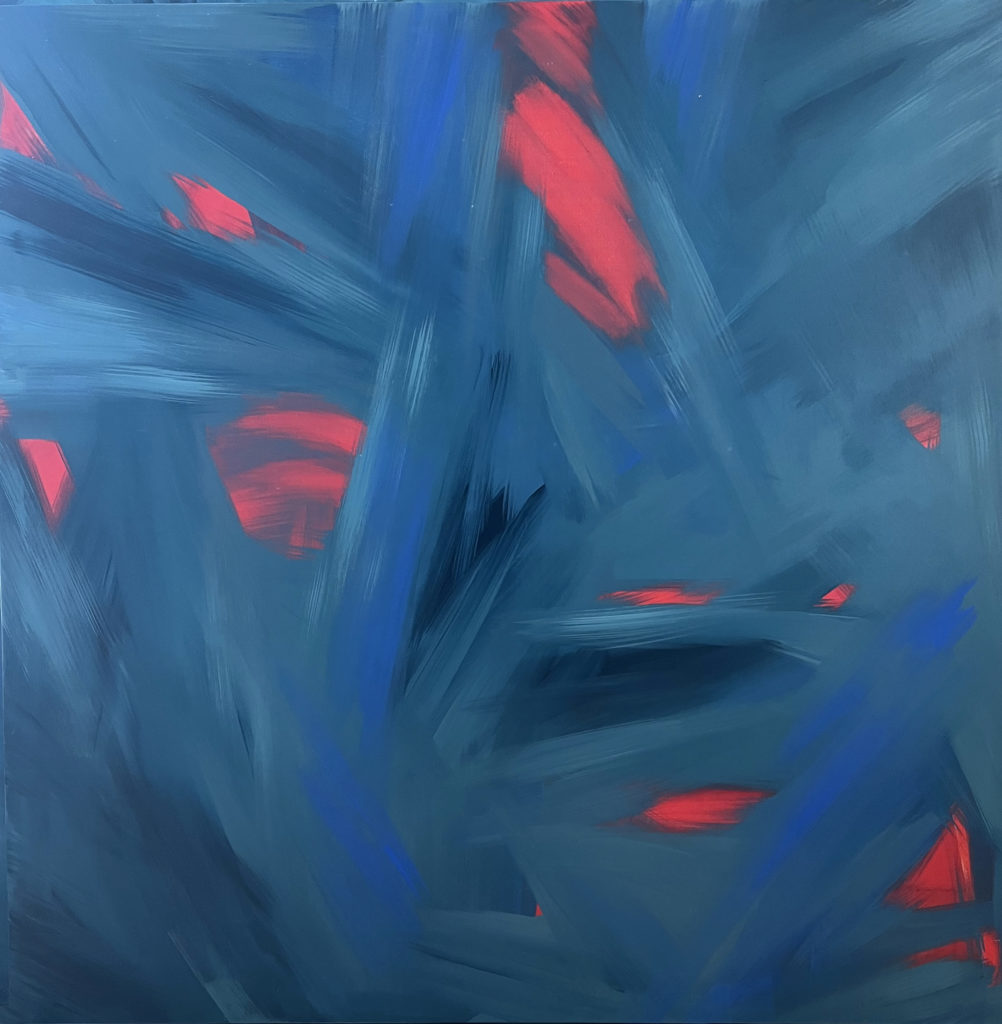
“TESSERACT “
2025
Modified acrylic on canvas
90 x 90
In Tesseract, Victoria Lubinska-Felix departs from figuration and ventures into pure dimensional speculation. Planes of blue intersect and collide, slashed by fissures of incandescent red, suggesting an unstable architecture — not a single space, but the unfolding of many. The canvas becomes a visual map of a four-dimensional object: a tesseract, a hypercube, something that cannot be seen in its entirety from within the limits of human perception.
Here, abstraction serves as portal. The strokes do not resolve into a fixed form; instead, they oscillate between structure and rupture, inviting the eye to wander through apertures that seem to open into elsewhere. The red fragments flicker like signals, sparks of other dimensions breaking through the veil of our three-dimensional world.
Within IMMORTALIS CONTINUUM, Tesseract functions as both key and threshold. It gestures to the idea that immortality — the project’s central inquiry — cannot be imagined within linear time or familiar geometry. To endure beyond the human means to inhabit a continuum where time folds, matter overlaps, and identity is refracted across dimensions.
Rather than depicting a traveler, Tesseract itself becomes the environment the travelers of Lubinska-Felix’s cosmos must navigate: a multidimensional field where survival, memory, and transformation are inseparable from the very fabric of spacetime.
* In geometry, a tesseract or 4-cube is a four-dimensional hypercube, analogous to a two-dimensional square and a three-dimensional cube. Just as the perimeter of the square consists of four edges and the surface of the cube consists of six square faces, the hypersurface of the tesseract consists of eight cubical cells, meeting at right angles.